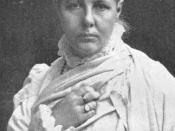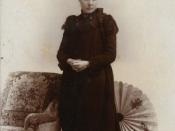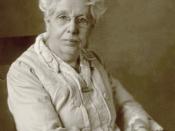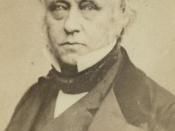Annie Besant describes the conditions of the London Match Workers as a kind of ÃÂwhite Slavery,ÃÂ but does their condition really match those of the slaves brought to the Americas? The conditions of both reflect social debates of their times, where human beings were treated as property. I see both parallels and differences between the conditions of LondonÃÂs working class and the African slaves brought to the AmericaÃÂsBeginning with the physical conditions of the labor each had to perform, many parallels exist between the hard labor of the British factory workers and plantation slaves. Annie Besant says, ÃÂOne girl was fined 1s. for letting the web twist around the machine in an endeavor to save her fingers from being cut, and was sharply told to take care of the machine, ÃÂnever mind your fingersÃÂ.ÃÂ The slaves also faced similar harsh conditions, but in some respects may have been treated better simply because of their value as property.
With little training necessary at their jobs, the owners faced little economic disincentive if a girl was injured or had to be replaced.
Next are the parallels between the way the factory workers and the slaves were viewed by the upper class and the government. Annie Bessant says, ÃÂBorn in slums, driven to work while still children, undersized because underfed, oppressed because helpless, flung aside as soon as worked out, who cares if the die or go on the streets, provided only that Bryant and May shareholders get their 23 percent.ÃÂ This is the view from the working class; they feel as if are treated like garbage. We do not see this opinion from the factory owners or the government. The government did little at first to promote fair treatment and wages for the children or adult factory workers. Many, like Thomas Babington Macaulay, argued that without the factories the girls would have no jobs resulting in even worse poverty. We see the same case made earlier for the black slaves. James Froude claims that the British system is good for the former slaves in the West Indies, in his article The English in the West Indies. The ÃÂruling classÃÂ will argue that the system in place is good for the people. But if the system was actually good for the people would riots exist in the West Indies? Would factory girls cut their arms and pour their blood in protest?But there were also profound differences in the upper-classesÃÂ view of the factory workers and the slaves. The factory workers were still viewed as people. And as we saw in the slide show, many people fought for their rights. The factory workers never faced the stigma that the slaves faced. Although the slaves were freed and conditions grew better, a century of hard fighting for equality was still to come.
Also the mentality of the factory workers and the slaves was not the same. The factory workers, although trapped by circumstance, were always free. For example, the girls did not want to come in late or take a day off from work because they would lose wages. Slaves did not face the same wage reducing punishments. It was worse; they could be beaten or switched to hard labor. The mentality of the slaves was a cry for freedom, not an end to the work.
Parallels exist between the ÃÂwhite SlaveryÃÂ and the slavery that the British, Spanish and Portuguese imposed on the African slaves in the Americas. Both white and black slaves faced hard labor, less-than human status in society and impossible to escape circumstances. However, the historical view and the ÃÂrevolutionsÃÂ for freedom occurred in different ways because of color and the views from the upper class.
BibliographyNorton Anthology of English Literature, 8th Ed, Vol 2





